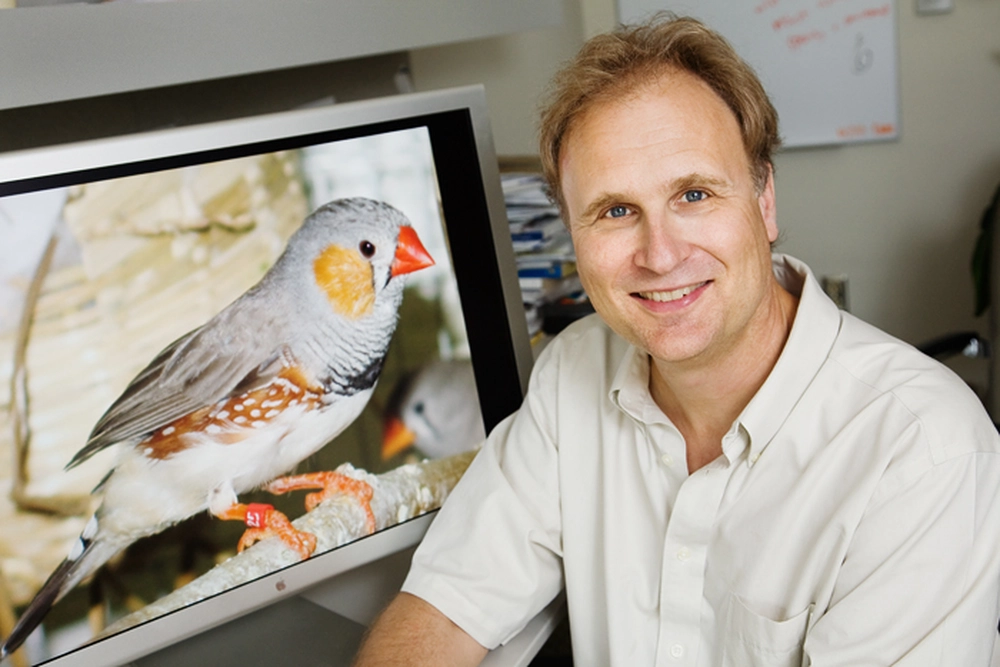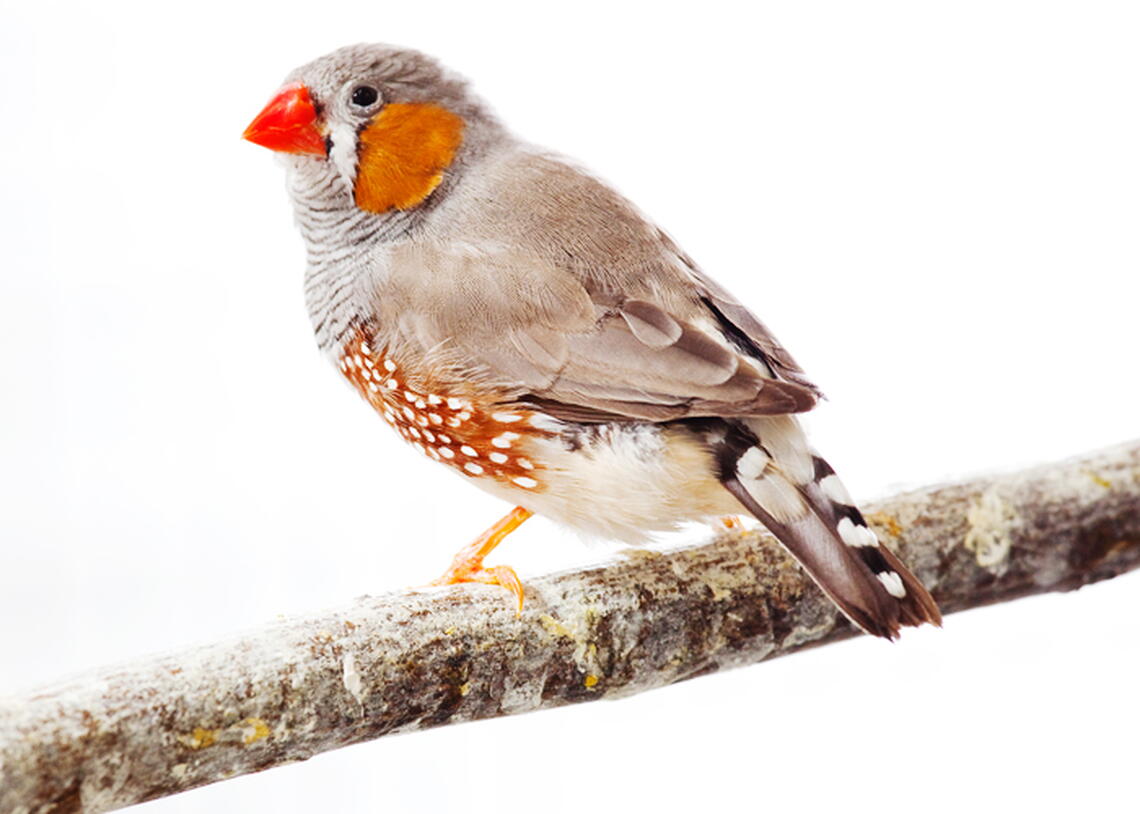
Professor of Neuroscience and Cell and Developmental Biology David Clayton and colleagues have analyzed the genome of the Australian zebra finch, deriving clues to its use of song in vocal communication.
The Australian zebra finch, Taeniopygia guttata, weighs less than half an ounce, mates for life and, unlike most vocalizing animals, learns its songs from its elders. A new analysis of its genome, the first of a songbird, is providing tantalizing clues to the mechanisms and evolution of vocal communication.
“There is a functional developmental parallel between the way a bird learns to sing and a human learns to speak,” said David Clayton, a professor of neuroscience and cell and developmental biology at the University of Illinois who led the group that proposed and organized the genome sequencing effort.

Photo by L. Brian Stauffer